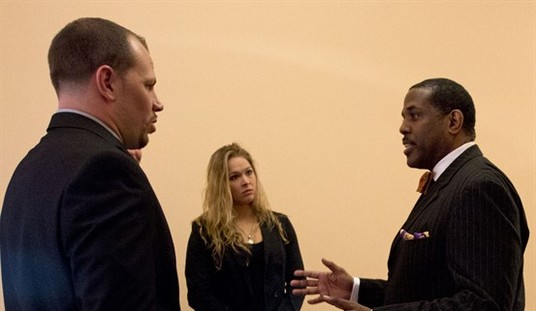MISSING THE MEAT by Michael S. Malone
The high tech sandwich is missing the meat.
Over the last thirty years, the United States has built, in the form of the electronics business, the most dynamic, innovative and – the petroleum industry aside – most valuable industry in history. These strengths have in turn enabled the U.S. to create millions of jobs to absorb a growing population, kept the country competitive against new challenges in the global marketplace, and through new inventions improved the health, the quality of life, and the prosperity of its citizens.
It is an amazing achievement, and centuries from now people will look back in wonder at how we ever did it . . .and, unfortunately, with equal amazement, that we let it slip away.
And it is all now slipping away.
It may not seem like the high tech industry is in serious trouble. On the contrary, if anything the news of the last week seem to suggest an entire market sector beginning to recover from the devastating recent recession. Microsoft is preparing to introduce Windows 7, a much-improved version (compared to its predecessor, Vista) of its industry-dominant Windows operating system. Cisco Systems, armed with a giant war chest, is back to its old ways – buying two multi-billion dollar companies in the last week. Google is introducing a new music search application. Twitter has announced that it is finally earning money – and has teamed up with Microsoft’s Bing search engine.
But biggest of all was the news this week that Apple Computer recorded a spectacular 25 percent quarterly jump in revenues to nearly $10 billion – most of it coming from iPhones and, amazingly given that the entire PC sector is growing old, Macs. Even slumping iPod sales couldn’t slow the Apple juggernaut – and, appropriately, the stock market responded by driving the company’s stock to a record high.
Put all of these stories together and it’s hard not to conclude that Silicon Valley and the rest of high tech are roaring back from last year’s crash and heading into yet another of the industry’s quadrennial upswings.
Meanwhile, and more anecdotally, this comeback is also visible on the ground. Valley real estate, for example, suffered about a 20 percent drop in value last winter – and though we weren’t quite Fresno, the cities on the periphery of Silicon Valley did suffer a devastating number of foreclosures. At the same time, a lot of office building construction was either put on hold, and finished facilities sat empty. Most tellingly, because for me this is the ultimate economic indicator, I didn’t have to set aside extra time to get to meetings and luncheons (what few I had during those days, as the entire Valley just seemed to stop dead) because the highways were half-empty.
But in the last couple months, I’ve noticed that home prices have been creeping back up to their pre-crash prices as folks with long commutes from the East Bay and Central Valley take advantage of the moment and buy into the Valley. The foreclosed homes as well have all-but disappeared. And if the new buildings and homes aren’t being built, the completed ones are slowly filling up. And, most important, I found myself the other day stuck in my car muttering about the damn traffic – something I haven’t done in nearly a year. Meanwhile, I used the time to look around at the new cars on the road around me.
As I said, on first glance it’s hard not be optimistic about the near future of the high tech industry.
Meanwhile, at the other end of the tech world there are equal grounds for optimism. Deep in the labs of the country’s biggest electronics corporations and most important universities, amazing technical breakthroughs are taking place – discoveries that barely get noticed in the non-technical media, but which could, a decade or two hence, transform our daily lives, change the nature of entertainment and education, and enable us to live longer and healthier.
Some of these are continuations of processes already at work – such as quintillion bit memories, ever-larger flat screen, 3-D imaging, improve sensors, etc. Others are unexpected and potentially thrilling – like the Taiwanese company that showed up in the Valley this week with audio speakers made from sheets of paper.
But the most compelling of these breakthroughs are coming from the deepest, darkest corners of solid state physics. Things like single atom switches, nanotechnology, and superconducting. And right now, none of these fields of research is more exciting than carbon, that most basic of elements and the source of all life on Earth. Right now, scientists are doing amazing – potentially historic – things with carbon atoms. One area of interest is carbon nanotubes, which are incredibly small, incredibly strong and have unique electrical and thermal properties that could lead to ultra-high frequency and very, very tiny circuits.
Just as interesting is graphene, which is basically sheets of carbon graphite that are only a few atoms thick. A few months ago, I had lunch with Federico Faggin, inventor of both the microprocessor and the touch pad, and he raved about the potential for graphene to create new generations of cell phones and other devices with chips that are faster, smaller, cheaper and require less power than ever before.
Once again, that’s all good news. But I began this column with the metaphor of a sandwich – now let me explain what I mean.
The high technology revolution that has transformed modern America (and the world) has been driven by three factors. Innovations in applied science – the bottom slice of bread; large companies – the top slice; and – the meat in the middle – new company creation.
Right now . . .and as far as I can see in the future . . .it is that middle that is missing. All of the prosperity I see returning to Silicon Valley is, in fact, something of an illusion. It is almost all money being spent by upper managers in big companies who survived the various lay-offs and now, with profits starting to climb, are seeing both bonuses and real purchasing power. The reality is that the Valley’s unemployment rate is now the highest in the fifty year history of “Silicon” Valley. As for the homes being sold; they are being snapped up by the tens of thousands of still employed workers who live outside the Valley and have been dreaming of moving closer to their jobs for a decade or more.
Meanwhile, at the other end, in applied research, all of those new discoveries are ultimately going to slow or stall because the ‘pull’ of innovators who want to put those technologies to work, is fading. Sure, some big and aggressive companies like Intel will put some these inventions to work. But the big pull has always come from the thousands of fast-moving, risk-taking new start-up companies who find unexpected (and sometimes vast) new applications for those technologies.
Those companies aren’t there anymore. The crucial center of the tech world – new and fast-moving companies – the meat in the technology sandwich – is gone. Under the press of an economic slowdown, government regulations that have handcuffed entrepreneurs and venture capitalists – and perhaps most of all, an Administration that increasingly seems actively hostile to entrepreneurship and small business – high tech is hollowing out.
It all still looks good – the new cars in Silicon Valley traffic, the announcements of exciting new inventions – but there is no there there. It is a comforting illusion, one that has us believing that good times are just around the corner, that the next Apples and Googles are waiting in the wings to help restore the country to economic leadership and prosperity, and that Silicon Valley will once more become the generator of millions of new jobs across the land.
But it isn’t true. Over the last couple months, I’ve seen some spectacular new start-up companies, some with finished products on the market. All of them are starving from lack of capital –and their business plans, which would have attracted tens of millions of dollars two years ago, earning only shrugs and apologies from straitened venture capitalists and banks. My guess is that several hundred new start-ups in Silicon Valley have already been lost, with no sign anywhere on the horizon.
If, as has been the case in the past, Silicon Valley and the tech industry are the leading indicators of the country’s economic health, this is going to be a truly ‘jobless recovery’, one that rewards the few at the expense of the many in ways we haven’t seen for decades, that consolidates power in Big Business at the expense of the little people, and which delays the adoption of important, life-saving, new inventions for years.
So much for ‘Fair’.
Sometime soon, a hungry Washington is going to look to high tech as it last hope in restoring prosperity and employment to millions of Americans. It will see an enticing sandwich of opportunity . . .but when it bites down it will find only air.
[For a decade of Michael S. Malone’s technology and business columns, please visit www.ABCNews.com]








Join the conversation as a VIP Member